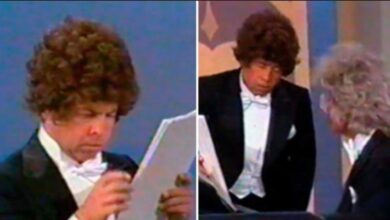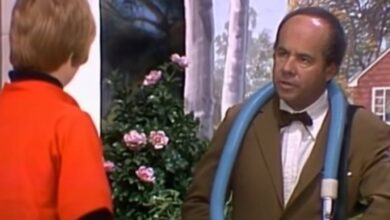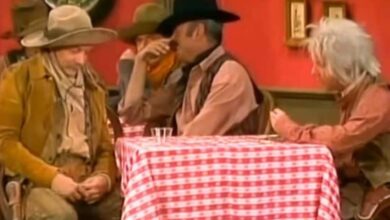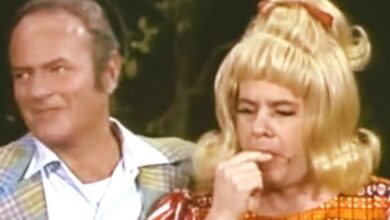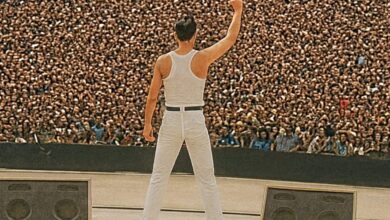Patsy Cline’s ‘Crazy’ Redefines Heartbreak and Crosses Musical Boundaries in 1961
When Patsy Cline released “Crazy” in 1961, country music was forever changed. Written by a then-unknown Willie Nelson, the song carried an elegance and emotional depth that transcended genre. With its aching melody and haunting delivery, “Crazy” became a defining moment not only in Cline’s career but in the evolution of American music itself. It reached No. 2 on the Billboard Hot Country Singles chart and crossed over to No. 9 on the Billboard Hot 100—a rare feat for a country song at the time, signaling a broad and lasting appeal.
Patsy Cline, born Virginia Patterson Hensley in Winchester, Virginia, had already made waves in Nashville before “Crazy” came along. Her 1957 breakout hit “Walkin’ After Midnight” had proven she could straddle both country and pop audiences. What set Cline apart was her rich, emotive contralto voice—uncommon in both its range and expressive power. At a time when many female country singers leaned into twang and traditional phrasing, Cline’s smoother, jazz-inflected style brought a sophistication that challenged norms and attracted widespread acclaim.
The story behind “Crazy” is one of musical fate. Willie Nelson, struggling to break into the scene as a songwriter, pitched the song to Cline’s producer, Owen Bradley. Initially, Cline wasn’t sold on it—she thought the phrasing was odd and the melody too complex. But after hearing Nelson’s offbeat, talk-sung demo, Bradley heard something extraordinary and convinced Cline to give it a shot. It wasn’t just a professional pairing—it was destiny aligning two unique talents, with Nelson’s melancholy words finding their perfect match in Cline’s aching voice.
The recording process, however, was far from easy. Cline had recently been in a serious car accident that left her with broken ribs, and her pain made hitting certain notes difficult. Owen Bradley had already recorded the instrumental track with the Jordanaires and Floyd Cramer before Cline entered the studio, so the pressure was on to match a polished foundation. It took multiple takes, but when Cline finally delivered the now-legendary vocal performance, everyone in the studio knew they had captured something extraordinary. Her voice trembled with vulnerability, conveying longing, confusion, and resolve all at once.
Upon its release in October 1961, “Crazy” quickly gained traction. It became one of the most played jukebox songs in the country, and its chart success was significant—not just in country, but in pop as well. Critics lauded Cline’s delivery as masterful, and audiences responded to the song’s emotional authenticity. In an era dominated by male artists and upbeat numbers, “Crazy” stood out as a slow-burning ballad driven by a female voice willing to embrace raw feeling.
“Crazy” had a profound impact on the music industry. It blurred the lines between country and pop in a way few songs had done before. While artists like Jim Reeves had started to inch country toward smoother arrangements, Cline made the leap feel effortless. Her rendition of “Crazy” opened doors for other country artists to experiment with crossover appeal, influencing how producers approached genre and arrangement in the studio.
For Patsy Cline, the song was transformative. It solidified her place not just as a country star, but as a vocal powerhouse with mainstream appeal. After “Crazy,” she was in high demand, performing on national television and selling out shows across the country. It also set a high bar for her next recordings, shaping the trajectory of her brief but brilliant career. Though her life would be tragically cut short just two years later in a plane crash, “Crazy” ensured her voice would live on.
The influence of “Crazy” extended far beyond Cline herself. It inspired a generation of singers to approach country music with a broader emotional and stylistic palette. Artists like Linda Ronstadt, Emmylou Harris, and k.d. lang all cited Cline as a pivotal influence—and “Crazy” as a benchmark in vocal storytelling. The song also earned its place in the repertoires of singers across genres, from jazz to pop and even soul.
Over the years, “Crazy” has been covered by countless artists. Linda Ronstadt, LeAnn Rimes, and Julio Iglesias are just a few who took on the song, each interpreting its yearning in unique ways. Even Willie Nelson, the songwriter himself, recorded it many times—his live performances of “Crazy” are now iconic in their own right. But no matter who sings it, the song remains synonymous with Patsy Cline.
Around the time “Crazy” was climbing the charts, Cline’s life was a whirlwind of performances, press, and personal challenges. Her marriage to Charlie Dick was reportedly turbulent, and she continued to battle the lingering effects of her car accident. Still, she channeled her personal pain into her music with unmatched honesty. That emotional truth gave her songs staying power, none more so than “Crazy.”
Today, “Crazy” is widely regarded as one of the greatest songs of the 20th century. It remains a staple on classic country and oldies radio, and in 1996, it was inducted into the Grammy Hall of Fame. The Library of Congress also recognized it as a culturally significant recording, preserving it in the National Recording Registry. It’s a testament to its timelessness that it continues to resonate with listeners of all ages.
In terms of musical innovation, “Crazy” was ahead of its time. The orchestration, with Floyd Cramer’s slipping piano and the Jordanaires’ subdued backing, offered a template for how country ballads could be lush without losing intimacy. Cline’s phrasing—lingering on syllables, bending notes with restraint—set a new standard for country vocals. The song’s structure, with its smooth modulations and bittersweet melody, showcased what country music could be when it dared to blend with pop sophistication.
Though Cline passed away in 1963, her legacy only grew in the decades that followed. “Crazy” became more than just a hit—it became a pillar of American music history. Nelson went on to legendary status, often pointing to Cline’s interpretation of his song as the launchpad of his career. For many fans, “Crazy” was their first introduction to both artists, and it remains one of the most emotionally resonant tracks ever recorded.
In the end, what makes “Crazy” endure isn’t just its technical brilliance or crossover appeal—it’s its humanity. The song taps into something universal: the ache of wanting someone who doesn’t love you back, the madness of holding on, and the dignity in singing it out loud. Cline gave that ache a voice, and in doing so, gave millions of people permission to feel their own sadness without shame.
Even more than sixty years later, “Crazy” still plays in dimly lit diners, car radios, and late-night playlists. It is a song that lives in the hearts of those who know that love, no matter how irrational, always leaves a mark. And with every note, Patsy Cline reminds us that vulnerability, when sung with truth, can become immortal.
